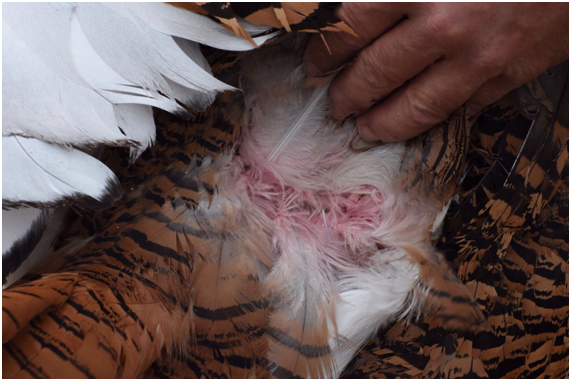Colours that underlie animal pigmentation can either be permanent or renewable in the short term. Here the discovery of a conspicuous salmon-pink colouration in the base of bustard feathers, never been reported because of its extraordinarily brief expression, is described. HPLC analyses indicated that its constituent pigments are coproporphyrin III and protoporphyrin IX, which are prone to photodegradation. Accordingly, an experimental exposure of feathers of three bustard species to sunlight produced a rapid disappearance of the salmon-pink colouration, together with a marked decrease in reflectance around 670?nm coinciding with the absorption of porphyrin photoproducts. The disappearance of the salmon-pink colouration can occur in a period as short as 12?min, likely making it the most ephemeral colour phenotype in any extant bird. The presence of this colour trait in males performing sexual displays may thus indicate to females a high probability that the males were performing their first displays and would engage in their first copulations in the breeding season. In dominant males, sperm quality decreases over successive copulations, thus porphyrin-based colouration may evolve as a signal of virginity that allows females to maximize their fitness in lek mating systems. informacion[at]ebd.csic.es: Galván et al (2016) Porphyrins produce uniquely ephemeral animal colouration: a possible signal of virginity. Sci Rep 6 39210 doi:10.1038/srep39210
http://www.nature.com/articles/srep39210

 Las altas temperaturas están provocando que las lagunas y las marismas de Doñana pierdan agua rápidamente
Las altas temperaturas están provocando que las lagunas y las marismas de Doñana pierdan agua rápidamente




